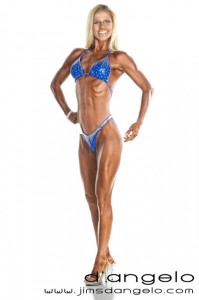[Lisa] I will be having five ounces of steak tonight as part of my dinner. It has 12.7 grams of fat. This is more than half of what Mike has allotted me daily for fat intake. Nevertheless, I want it and am going to have it. I have planned for it and logged it in my food diary. Why is it I have to keep a food diary in order for me to lose weight? I watch naturally thin people go about their lives without writing down what they eat or what they plan on eating. Yet, they remain at an ideal body weight. Whether I am seriously focusing on losing weight or not I am very much aware of the caloric make-up of foods that I eat. Further, I also know and/or look up how many calories are burned for any exercise I do. For example, a half gallon of plain vanilla ice cream (one serving in my world, I mean my OLD world) is 1200 calories. This translates to jogging for 2 hours at about 5 mph. Not gonna happen! I guarantee you my naturally thin husband has no idea how many calories he eats and burns in a day, week, month EVER! This is not fair and I demand to know why this is. Mike?
[Mike] Why keep a food diary? Why have limits on your food/caloric intake? Why worry about what others can eat and you can’t?
Here’s the deal, by definition a calorie is a measure of energy expenditure. You require food for one reason and one reason only and that is to supply your body with the energy (calories) it needs to sustain proper function and support your daily activity. Whether you like it or not or, think it’s unfair, there are limits to how many calories you can consume regardless of how “healthy” you eat. Because your body only needs so many calories to do its job as soon as those needs are met any additional calories, whether from ice cream or Cream of Wheat, get stored as fat.
The only time fat gets used for energy is when your body is in a caloric deficit. Meaning you are not taking enough calories to support your energy requirements so now your body goes scrounging for them.
The reason why keeping a food journal and tracking your calories–as well as your carbs, proteins, and fats–is necessary is so you know precisely how much you can eat instead of taking a guess or being erratic. It’s a scorecard. Just like in golf the way you win the fat-loss gam is by shooting under par.
If your baseline requirement is 1200 calories a day, then you need to take in less than that in order to start using the calories stored as fat to fill the gap. If you haven’t read it yet check out my blog on how to figure out your caloric needs for fat-loss at: http://yorktown-somers.patch.com/blog_posts/fat-loss-its-a-numbers-game
Now regarding your husband and other naturally thin people who don’t have to track their food intake, who can eat whatever they want, who have metabolisms like race cars…GET OVER IT. Sometimes life just isn’t fair, boo-hoo. Why don’t we just throw a pity party because others seem to have it easier in one small area of life than the rest of us.
The fact is some people inherently have fast metabolisms—it’s genetic. You can blame your parents (and they are the ones to blame) or you can make the necessary adjustments to your diet and do proper weight training to increase your metabolic rate. Just stop whining about it, whining does not have a positive effect on your metabolism.





